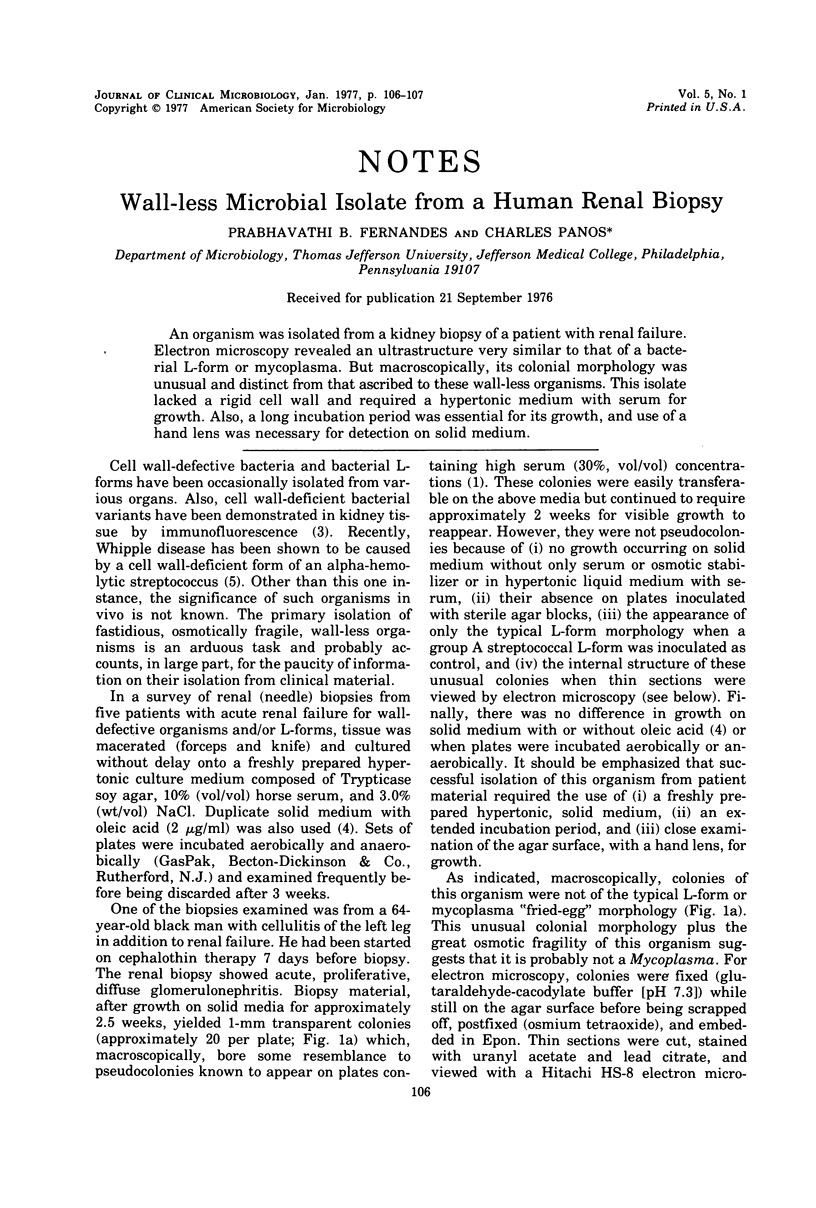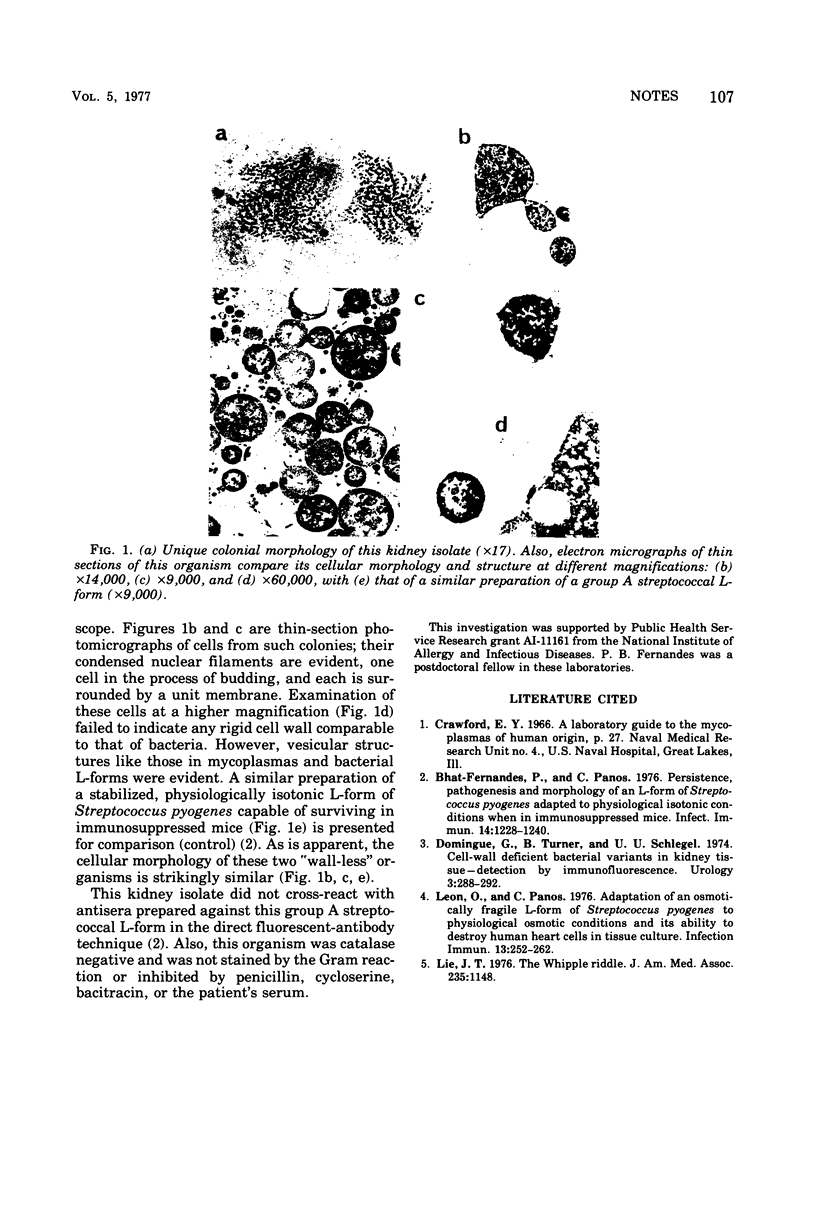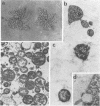Abstract
An orgainsm was isolated from a kidney biopsy of a patient with renal failure. Electron microscopy revealed an ultrastructure very similar to that of a bacterial L-form or mycoplasma. But macroscopically, its colonial morphology was unusual and distinct from that ascribed to these wall-less organisms. This isolate lacked a rigid cell wall and required a hypertonic medium with serum for growth. Also, a long incubation period was essential for its growth, and use of hand lens was necessary for detection on solid medium.
Full text
PDF

Images in this article
Selected References
These references are in PubMed. This may not be the complete list of references from this article.
- Domingue G., Turner B., Schlegel J. U. Cell-wall deficient bacterial variants in kidney tissue. Detection by immunofluorescence. Urology. 1974 Mar;3(3):288–292. doi: 10.1016/s0090-4295(74)80105-6. [DOI] [PubMed] [Google Scholar]
- Fernandes P. B., Panos C. Persistence, pathogenesis, and morphology of an L-form of Streptococcus pyogenes adapted to physiological isotonic conditions when in immunosuppressed mice. Infect Immun. 1976 Nov;14(5):1228–1240. doi: 10.1128/iai.14.5.1228-1240.1976. [DOI] [PMC free article] [PubMed] [Google Scholar]
- Leon O., Panos C. Adaptation of an osmotically fragile L-form of Streptococcus pyogenes to physiological osmotic conditions and its ability to destroy human heart cells in tissue culture. Infect Immun. 1976 Jan;13(1):252–262. doi: 10.1128/iai.13.1.252-262.1976. [DOI] [PMC free article] [PubMed] [Google Scholar]



